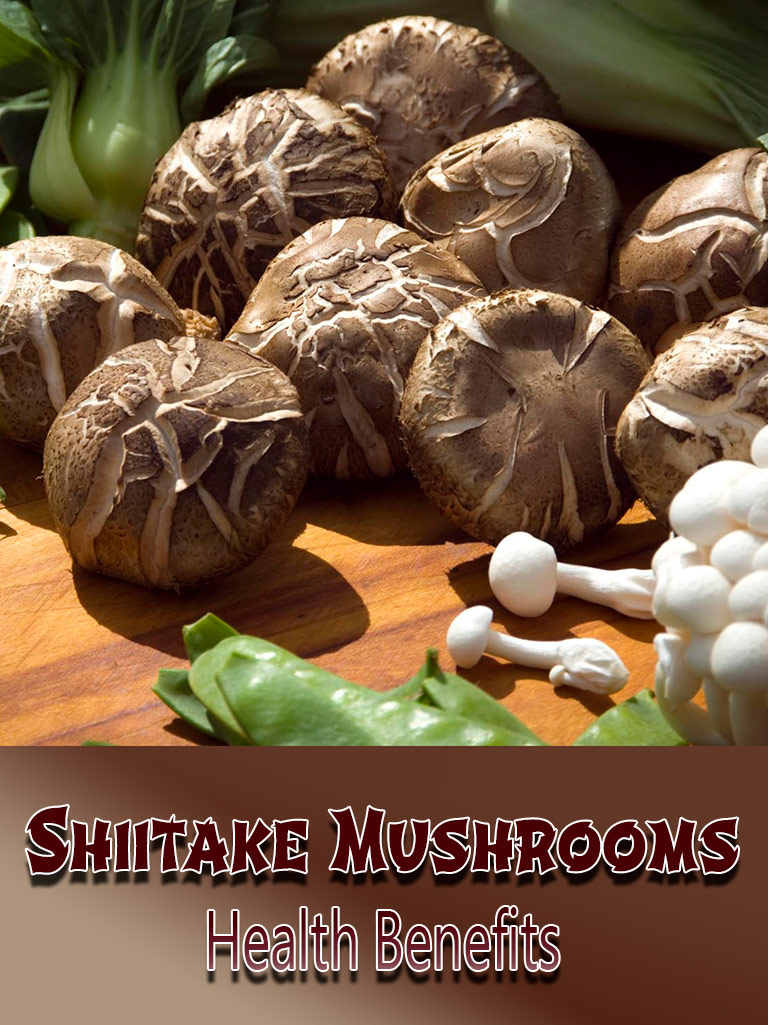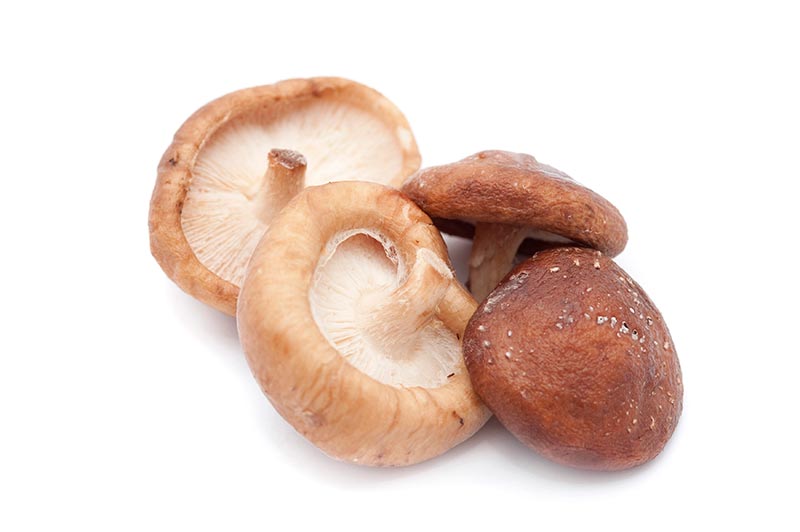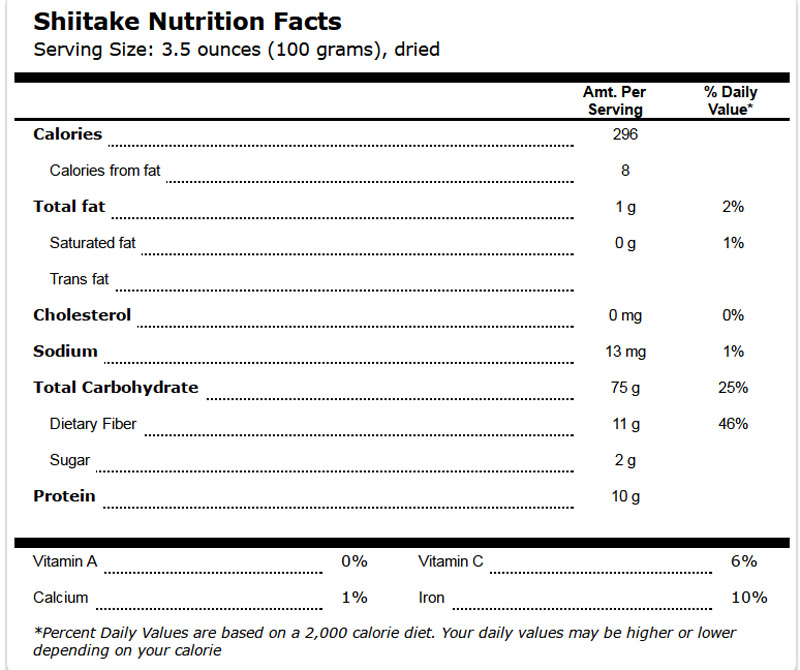
Shiitake Mushroom Showcase
Translated from Japanese, “shii” refers to the tree on which these mushrooms originally grew, while “také” simply means mushroom.
These little beauties are venerated not just because of their primordial origin, but because of the many health-boosting properties they contain, discovered over centuries of ancient medicine.
Having no roots, leaves, blossoms, or seeds, shiitake mushrooms fall into a special category: fungus. Famous for their rich texture and smoky flavor, they’re the second most commonly cultivated edible mushrooms, readily available on market shelves worldwide. Compared with white button mushrooms, shiitakes are purported to have more than 10 times the flavor. This can intensify when they’re dried and reconstituted by soaking in water.
Although they still grow wild, China yields around 80% of the world market in production, although Japan held this distinction initially. Today, more than 200 growers in the U.S. utilize the labor-intensive but superior “forest farming” method to produce shiitake mushrooms on hardwood logs. “Grow-at-home” kits prepared by mushroom specialty companies also maintain a lively business.
Overseas, where oversight is limited, shiitake mushrooms are sometimes mass cultivated on sawdust blocks, using pesticides and fungicides that compromise the quality and safety of the finished product. Between forest-farmed shiitakes and the “mock-up” variety, the difference can range between $4 and $40 per pound, depending on the market. So when purchasing, look for the “certified organic” logo on the label to ensure you’re getting the real deal.
When purchasing, shiitakes should be firm, not moist or wrinkled. Keep them refrigerated in a paper bag for up to a week. Just before use, wipe them with a clean, damp cloth to prevent sogginess. Dried, they keep in the freezer for up to a year. Sautéing shiitake mushrooms gently is the best cooking method to keep the good stuff good, both taste-wise and nutritionally.
Shiitake Mushrooms Health Benefits
Comparing the vitamins, minerals, antioxidants, and phytonutrients between foods, shiitake mushrooms are completely unique. Copper figures most prominently, with 65% of the daily value per serving, significant because copper is one of the few metallic elements accompanied by amino and fatty acids, essential to human health. Linoleic acid is one. Since the body can’t synthesize copper, our diets must supply it regularly. But researchers say that not only do few people eat adequate amounts of copper-containing foods, but copper deficiency can also be a factor in coronary heart disease development.
Right behind copper is pantothenic acid and selenium, which provide 52% and 51% of the daily value, respectively. Riboflavin, niacin, zinc, and manganese play supportive roles, along with ergothioniene, an antioxidant that inhibits oxidative stress.
Shiitake mushrooms also contain strong compounds having the natural ability to discourage inflammation, tumors, “bad” bacteria, harmful viruses, and, ironically, fungus. B vitamins such as B2, B5 and B6 are part of the package, providing energy by breaking down fats, carbs, and proteins.
Studies on Shiitake Mushrooms
Lentinan, a potent antifungal protein in shiitake mushrooms, was found to have cancer-preventing properties. One study resulted in slower development of smaller tumors after oral treatment with lentinan. It also exhibited a reduction in the negative effects in the progression of HIV and ability of leukemia cells to proliferate.
Another study found that the spores (mycelia) of shiitake mushrooms can have protective abilities on the liver, suppress inflammation, and even have cancer-preventive properties for patients with chronic hepatitis.






Leave a Reply